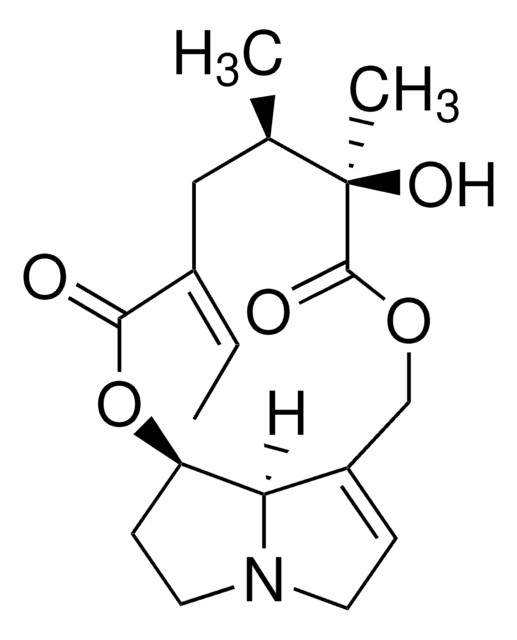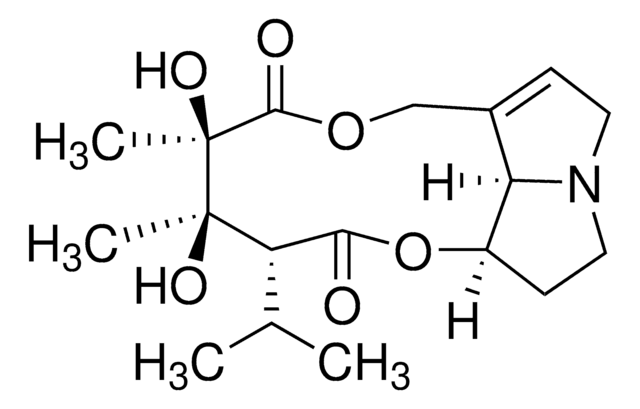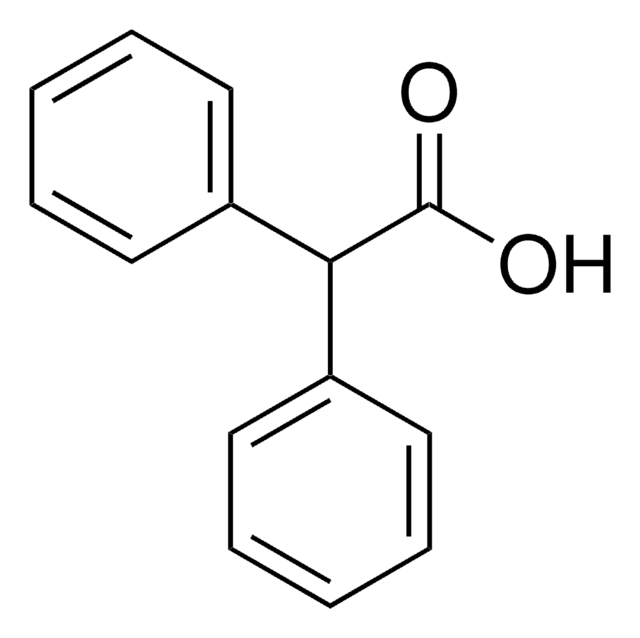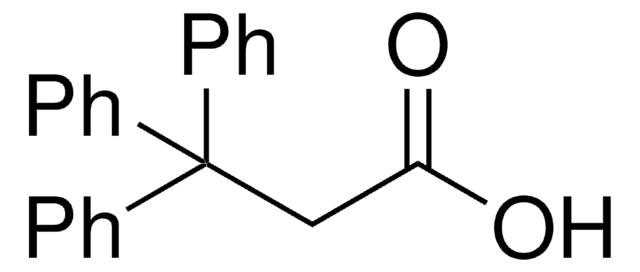T81205
Triphenylacetatsäure
99%
Synonym(e):
Tritylameisensäure
Anmeldenzur Ansicht organisationsspezifischer und vertraglich vereinbarter Preise
Alle Fotos(1)
About This Item
Lineare Formel:
(C6H5)3CCO2H
CAS-Nummer:
Molekulargewicht:
288.34
EG-Nummer:
MDL-Nummer:
UNSPSC-Code:
12352100
PubChem Substanz-ID:
NACRES:
NA.22
Empfohlene Produkte
Qualitätsniveau
Assay
99%
mp (Schmelzpunkt)
270-273 °C (lit.)
SMILES String
OC(=O)C(c1ccccc1)(c2ccccc2)c3ccccc3
InChI
1S/C20H16O2/c21-19(22)20(16-10-4-1-5-11-16,17-12-6-2-7-13-17)18-14-8-3-9-15-18/h1-15H,(H,21,22)
InChIKey
DCYGAPKNVCQNOE-UHFFFAOYSA-N
Suchen Sie nach ähnlichen Produkten? Aufrufen Leitfaden zum Produktvergleich
H-Sätze
Gefahreneinstufungen
Aquatic Chronic 4
Lagerklassenschlüssel
11 - Combustible Solids
WGK
WGK 3
Flammpunkt (°F)
Not applicable
Flammpunkt (°C)
Not applicable
Persönliche Schutzausrüstung
Eyeshields, Gloves, type N95 (US)
Hier finden Sie alle aktuellen Versionen:
Besitzen Sie dieses Produkt bereits?
In der Dokumentenbibliothek finden Sie die Dokumentation zu den Produkten, die Sie kürzlich erworben haben.
Kunden haben sich ebenfalls angesehen
S Fournel et al.
Biochimica et biophysica acta, 883(2), 190-196 (1986-09-04)
Bilirubin UDPglucuronosyltransferase of rat or human liver microsomes was inhibited, in vitro, by triphenylacetic acid and by structurally related arylcarboxylic acids. This inhibition appeared to be competitive towards bilirubin, and mixed-type towards UDPglucuronic acid. A decrease in the number of
A D Blackwood et al.
Biochimica et biophysica acta, 1206(2), 161-165 (1994-06-12)
Combinations of triisooctylamine with its hydrochloride, or of triphenylacetic acid with its Na+ salt, can function as buffers for use during biocatalysis in organic media. They can control the pH of an adjacent aqueous phase, even though both forms of
Grant A McNaughton-Smith et al.
Journal of medicinal chemistry, 51(4), 976-982 (2008-02-01)
Sickle cell disease (SCD) is a hereditary condition characterized by deformation of red blood cells (RBCs). This phenomenon is due to the presence of abnormal hemoglobin that polymerizes upon deoxygenation. This effect is exacerbated when dehydrated RBCs experience a loss
Unser Team von Wissenschaftlern verfügt über Erfahrung in allen Forschungsbereichen einschließlich Life Science, Materialwissenschaften, chemischer Synthese, Chromatographie, Analytik und vielen mehr..
Setzen Sie sich mit dem technischen Dienst in Verbindung.










